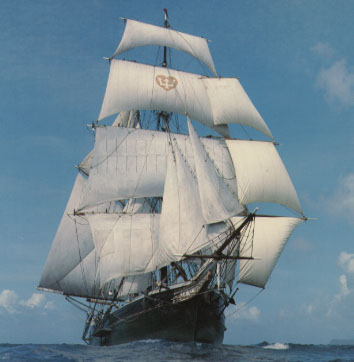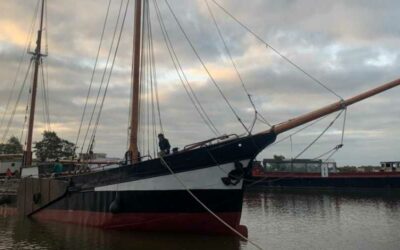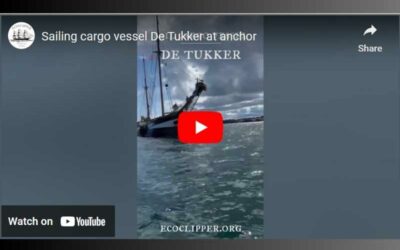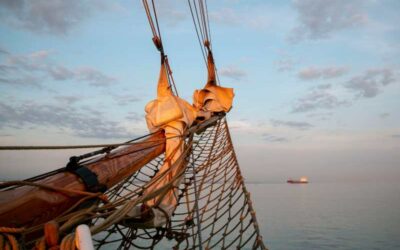As progress in the shipping industry began to replace the sailing ship in favor of their mechanical counterparts, future use for the sailing ship was in review. A few shipping companies were reluctant to simply drop the proven technology that had been used so extensively for the development of the modern world.
Ship-owners such as F. Laeisz and Gustav Erikson continued to use sailing ships for certain cargo operations well into the 20th century, indicating an advantage in long distance voyaging without the need to re-fuel. Eventually motor cargo ships grew in size, well past the largest ships of the previous generation and were able to compete in cargo capacity. The Panama Canal by-passed the dangerous voyage around Cape Horn, effectively voiding the use of the large steel sailing ships custom designed for that undertaking.
By the end of the age of sail the Sail Training Vessel had already proven itself as a useful educational platform for practical seamanship techniques. This form of training on a sailing ship, in addition to classroom based academic nautical study, provides an opportunity for younger generations to learn seamanship practices that can prove invaluable in their careers.
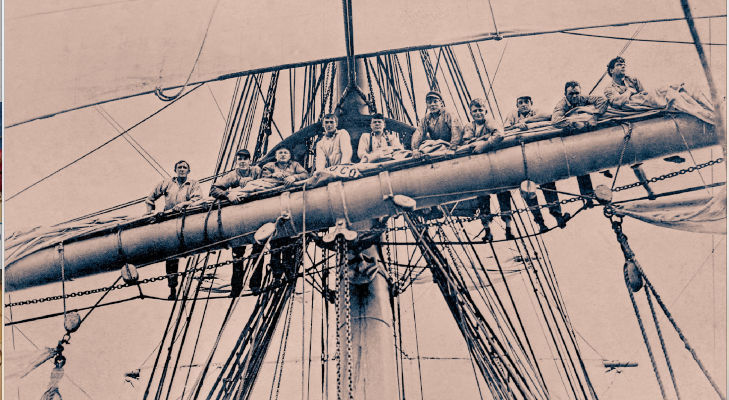
There were many discussions about the usefulness of training cadets aboard traditionally rigged sailing ships around the middle of the 19th century. Some skeptics considered it a complete waste of time since a trainee would serve their rotation and never step aboard a sailing ship again. Yet other more forward-thinkers maintained that the character development achieved during this activity would in effect form the fundamental basis on which an entire future career at sea would be built. The experience of maintaining a working relationship with the other crew-members has proven to be vital for developing a foundation of seamanship and the square-rigged ship offers a unique platform in relation to its dependence on human effort.
In addition, a cadet will most certainly learn the advantages of self-reliance in certain situations such as working aloft that a powered ship cannot offer. Doing your part to share in the group effort becomes very necessary when sail handling and hauling on gear and anyone failing to do so would have very little effect on the well-being of the ship or the fellow cadets. This lesson is important for mariners who eventually earn their own command as all of the responsibilities of that office would rest on their shoulders.
The idea of training aboard a sailing vessel comes down to a simple idea that after learning and achieving an intimate knowledge of their operation, and absorbing the experience and lessons of propelling a ship by the wind, that crewing aboard a motor-driven ship should be relatively straight forward.
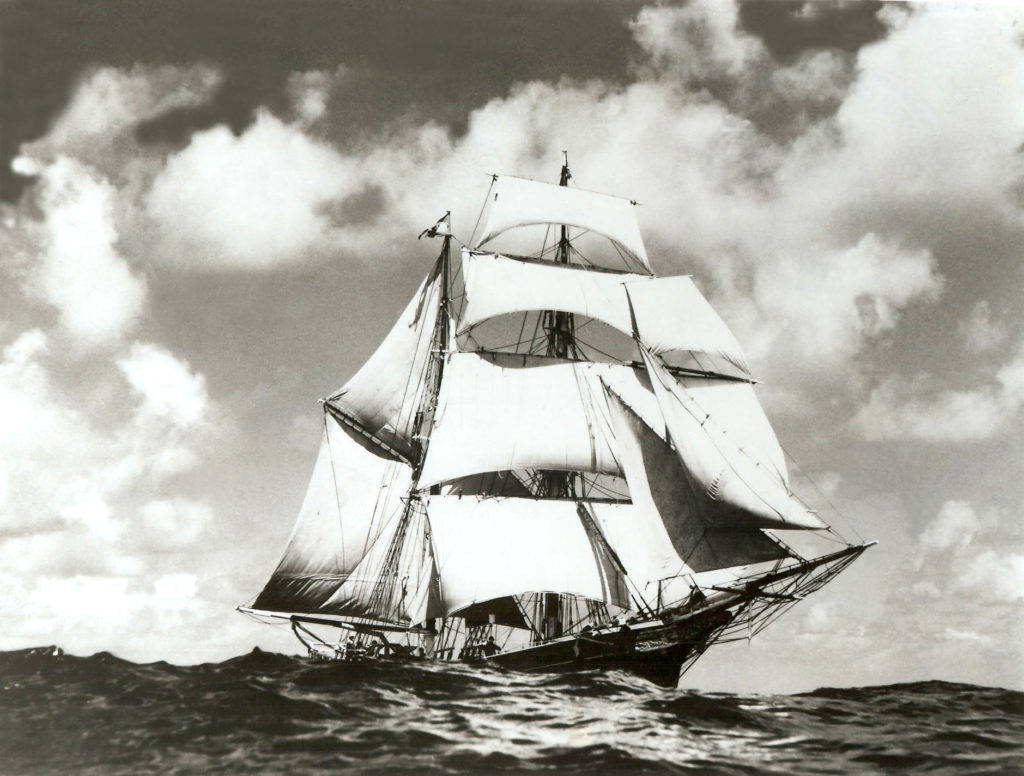
Two of the sail-cargo carriers formally of F. Laeisz shipping company combined freight with sail-training. These Flying-P Liner ships, the Pamir and Passat continued in this capacity up until the late 1950’s after the tragic loss of the Pamir. While the shipping companies of Erickson and F. Laeisz gradually turned to steam, the next generation of captains were climbing up the hawsehole and taking command of their own vessels, redefining sail training as a purely educational endeavour with trainees as the cargo.
Between 1932 and 1958, Irving Johnson and his wife Exy circumnavigated the world 7 times with amateur youth crews on board their vessels named Yankee. Johnson had in 1929 sailed aboard the Peking, another of the great P-Liners on a trip from Germany to Chile, around Cape Horn, therefore creating an unbroken thread of seamanship connected directly to the age of sail. Over the years, the voyages of the Yankee were featured in books and in National Geographic magazines and TV specials. Among the sailors who ventured with the Johnsons were Arthur “Skipper” Kimberly and future movie star Sterling Hayden.
Australian-born author and mariner Alan Villiers, who had served on the large grain ships, purchased the training ship George Stage from Denmark in 1934 and renamed her the Joseph Conrad. He sailed her round the world with trainees including those he considered “at risk” and in need of what was then called “character building”. The voyages of the Yankee and the Joseph Conrad were the genesis of current modern sail training, using manually operated ships and the harsh discipline imposed by the sea to further personal development
The brigantine Romance, under the command of Arthur Kimberly, continued this noble venture into the 60s, 70s and 80s. The vessel offered long term round-the-world voyages as well as shorter trips to the south Pacific with young men and women aboard as trainees. The Romance had been previously re-rigged as a brigantine by Alan Villiers so both the ship and her Captain had direct links to the days of sail and early days of sail-training. Many sailors still involved with Sail Training Vessels had their start on the Romance.
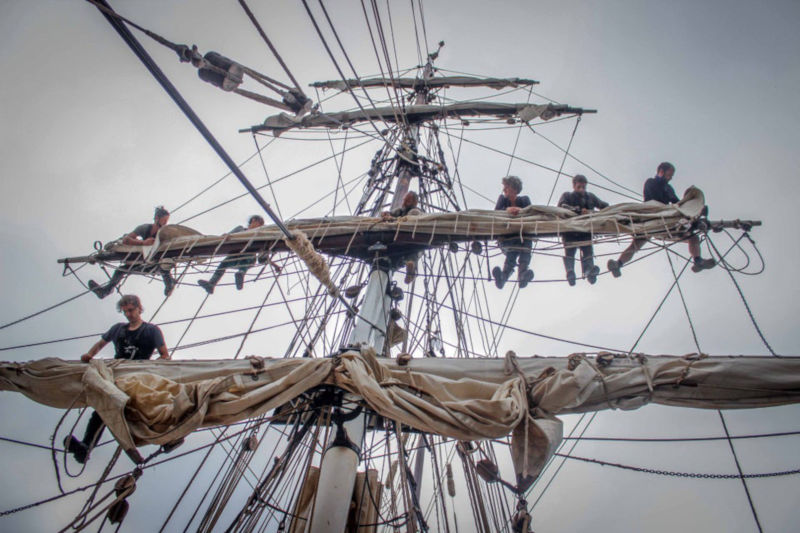
After the sinking of the Pamir in 1957 and the Albatross in 1961 general interest in traditional sailing ships dwindled. Regulations became stricter making it more complicated to design and operate appropriate sailing rigs. Fewer countries would maintain training vessels as supplements to maritime education and a sort of farewell sail had already been conducted in 1956 in the form of a race from England to Portugal. Training ships from Denmark, Norway, Belgium and Portugal took part in this historic gathering and proved extremely popular.
In what was conceived to be last great gathering of square-riggers under sail in fact became the first in an annual gathering which draws large crowds of visitors in the selected ports and puts many hundreds of youth to sea. Old vessels were repaired and new purpose-built sail training vessels were commissioned. With renewed interest in sail, national sail-training associations started to appear and large Tall Ship events finds dozens of ships racing across the oceans.
Although many nations operate training vessels to educate naval and mercantile cadets many other organizations offer berths to the public. These organizations are less involved with the development of a well-rounded nautical education but with the development of character in the individual participants as was Alan Villiers with the Joseph Conrad. A common maxim:
“We do not train youth for a life at sea … we use the sea to educate youth for life”.
We can see the usefulness of the sailing ship in regards to learning seamanship, self-reliance and teamwork. The popularity of these ships and their historical importance is undisputed. The lessons learned from thousands of years of maritime history are passed down from one crew to the next. That connection to our past can be experienced by sailing aboard and future generations may even see the return of wind ships dominating ocean trade.
